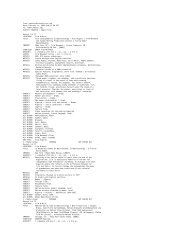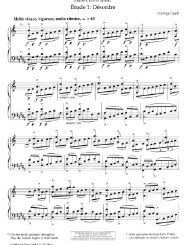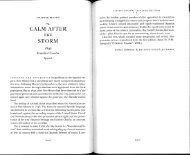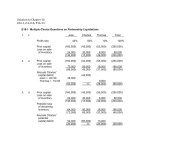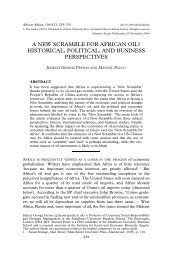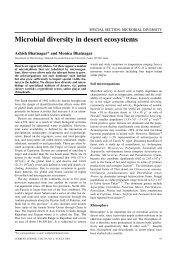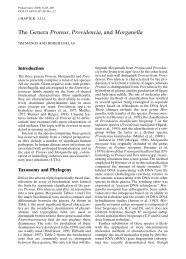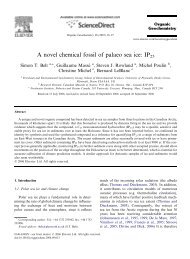Analysis by Key: Another Look at Modulation
Analysis by Key: Another Look at Modulation
Analysis by Key: Another Look at Modulation
Create successful ePaper yourself
Turn your PDF publications into a flip-book with our unique Google optimized e-Paper software.
CARL SCHACHTER<br />
My deriv<strong>at</strong>ion of the aria's complex tonality from an underlying BW di<strong>at</strong>ony<br />
illustr<strong>at</strong>es the difference between Schenker's approach and other monotonal<br />
theories, notably Schoenberg's. Schenker's notion of Auskomponierung allows<br />
him to find meaningful larger contexts for chords (including tonicized chords)<br />
th<strong>at</strong> are not under the control of an immedi<strong>at</strong>ely perceptible local tonic. He can<br />
do this because he recognizes counterpoint as a shaping force in composition, a<br />
force th<strong>at</strong> can give rise to successions of chords and, indeed, to 'keys'. Giving<br />
counterpoint its due also allows Schenker to recognize the vastly different roles<br />
th<strong>at</strong> the same 'region' can play in different contexts: e.g., bVII in wh<strong>at</strong> is<br />
essentially a tonic prolong<strong>at</strong>ion <strong>at</strong> the beginning of Beethoven's Op.53 and the<br />
AS major as part of an unfolded V in 'Voi che sapete'.<br />
I hope th<strong>at</strong> I have shown convincingly th<strong>at</strong> Mozart's return to Bb is not the<br />
intentionally (though subtly) botched process th<strong>at</strong> Schoenberg seems to have<br />
thought it was. Th<strong>at</strong> return is not really from AW, as Schoenberg suggests; the<br />
Ab is part of a larger F harmony (V) which sheds its tonic stability without<br />
ceasing to direct the progression of chords and 'keys'. The prolong<strong>at</strong>ion of V<br />
goes through three phases: tonicizing F (bs 21-36), unfolding it in minor form<br />
(whence the Ab) before leading it to G (bs 37-52), and bringing the G up to A<br />
counterpointed below <strong>by</strong> the return to an F th<strong>at</strong> is now unequivocally a<br />
dominant (bs 53-61).<br />
Schenker's approach can lead to an understanding of how the seemingly<br />
unrel<strong>at</strong>ed 'keys' of the aria's B section form an integr<strong>at</strong>ed whole; in this regard it<br />
is much more successful, I think, even than Schoenberg's Theory of Regions, to<br />
say nothing of analytic methods th<strong>at</strong> simply produce a string of keys. At the<br />
same time one must remember th<strong>at</strong> the integr<strong>at</strong>ive powers of the arpeggi<strong>at</strong>ed F<br />
chord and of the linear progression F - G - A - BS assert themselves against a<br />
strong centrifugal counterforce th<strong>at</strong> sets up quasi-independent key centres <strong>at</strong><br />
l<strong>at</strong>er levels. To concentr<strong>at</strong>e on background continuity to the exclusion of<br />
foreground disruptions is to produce a skewed picture of a piece or passage.<br />
Example 16 shows a possible middleground structure very similar to the B<br />
section of 'Voi che sapete' but with almost none of its richly chrom<strong>at</strong>ic<br />
elabor<strong>at</strong>ion. Despite the underlying similarity, how different it is!<br />
Ex. 16<br />
! ffiWS_<br />
9W1 r r >><br />
S h -- 5 - 6 6<br />
(unfolded) °s<br />
V 7<br />
314 MUSIC ANALYSIS 6:3, 1987



